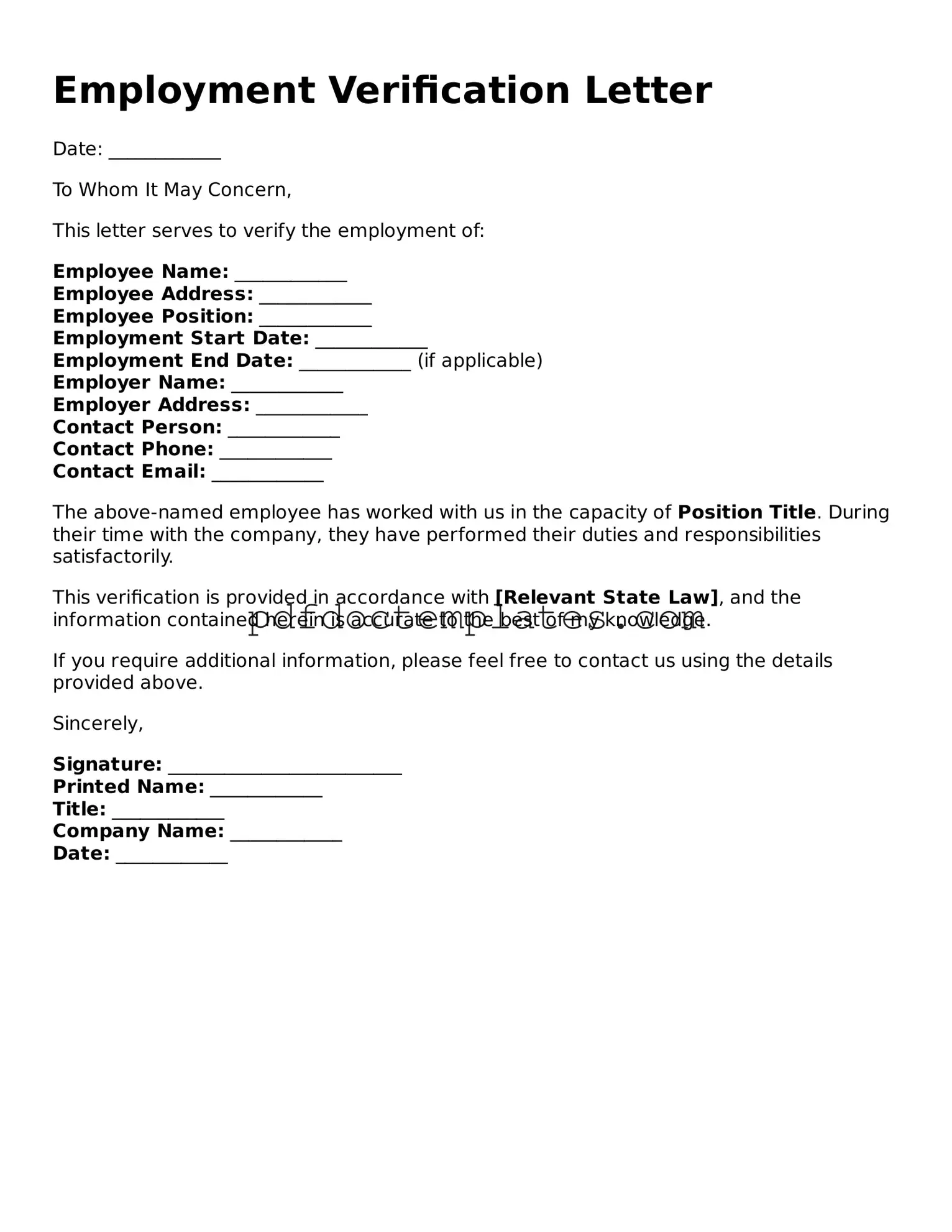Employment Verification Letter
Date: ____________
To Whom It May Concern,
This letter serves to verify the employment of:
Employee Name: ____________
Employee Address: ____________
Employee Position: ____________
Employment Start Date: ____________
Employment End Date: ____________ (if applicable)
Employer Name: ____________
Employer Address: ____________
Contact Person: ____________
Contact Phone: ____________
Contact Email: ____________
The above-named employee has worked with us in the capacity of Position Title. During their time with the company, they have performed their duties and responsibilities satisfactorily.
This verification is provided in accordance with [Relevant State Law], and the information contained herein is accurate to the best of my knowledge.
If you require additional information, please feel free to contact us using the details provided above.
Sincerely,
Signature: _________________________
Printed Name: ____________
Title: ____________
Company Name: ____________
Date: ____________
